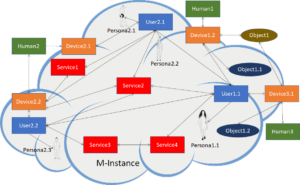Introduction
In past publications, I have often talked about how many times MPEG has changed its skin during its 3-decade long life. In this article I would like to add substance to this claim by giving a rather complete, albeit succinct, account. You can find a more detailed story at Riding the Media Bits.
The early years
MPEG-1
MPEG started with the idea of creating a video coding standard for interactive video on compact disc (CD). The idea of opening another route to video coding standards had become an obsession to me because I had been working for many yeas in video coding research without seeing ant trace of consumer-level devices for what was touted as the killing application at that time: video telephony. I thought that if the manufacturing prowess of the Consumer Electronics (CE) industry could be exploited, that industry could supply telco customers with those devices so that telcos would be pushed into upgrading their networks to digital in order to withstand the expected high videophone traffic.
The net bitstream from CD – 1.4 Mbit/s – is close to the 1.544 Mbit/s of the primary digital multiplex in USA and Japan. Therefore it was natural to set a target bitrate of 1.5 Mbit/s as a token of the CE and telco convergence (at video terminal level).
At MPEG1 (1988/05) 29 experts attended. The work plan was agreed to be MPEG-1 at 1-1.5 Mbit/s, MPEG-2 and 1.5-10 Mbit/s and MPEG-3 at 10-60 Mbit/s (the numbering of standards came later).
For six months all activities happened in single sessions. However, 3 areas were singled out for specific activities: quality assessment (Test), complexity issues in implementing video codecs in silicon (VLSI) and characteristics of digital storage media (DSM) . The last activity was needed because CD was a type of medium quite dissimilar from telecom networks and broadcast channels, for which video coding experts did not have much familiarity.
In the following months I dedicated my efforts to quell another obsession of mine: humans do not generally value video without audio. The experience of the ISDN videophone where, because of organisational reasons, video was compressed by 3 orders of magnitude in 64 kbit/s and audio was kept uncompressed in another 64 kbit/s stream, pushed me into creating an MPEG subgroup dedicated to Audio coding. Audio, however, was not the speech used in videotelephony (for which there were plenty of experts in ITU-T), but the audio (music) typically recorded on CDs. Therefore an action was required lest MPEG end up like videoconference, with a state-of-the-art video compression standard but no audio (music) or with a quality non satisfactory for the target “entertainment-level” service.
The Audio subgroup was established at MPEG4 (1988/10) under the chairmanship of Hans Mussmann, just 7 months after MPEG1, while the Video subgroup was established at MPEG7 (1989/07), under the chairmanship of Didier Le Gall, about a year after MPEG1.
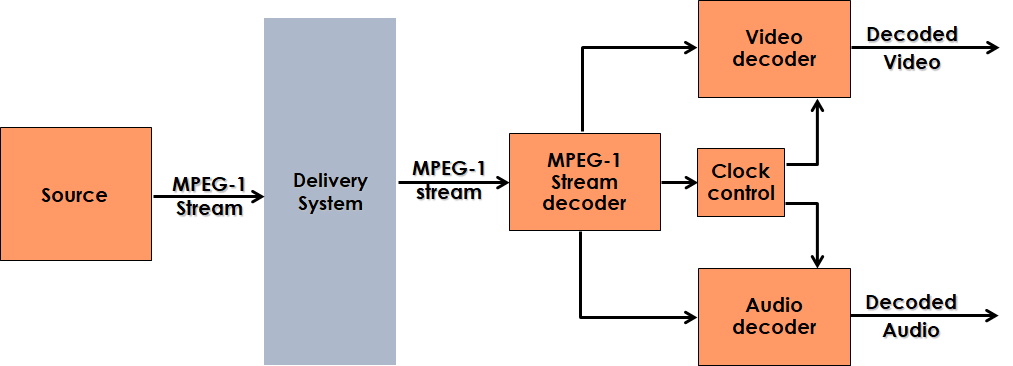 The other concern of mine was that integrating the audio component in a system that had not been designed for that could lead to some technical oversights that could be only belatedly corrected with some abominable hacks. Hence the idea of a “Systems” activity, initially similar to the H.221 function of the ISDN videophone (a traditional frame and multiframe-based multiplexer), but with a better performance because I expected it to be more technically forward looking.
The other concern of mine was that integrating the audio component in a system that had not been designed for that could lead to some technical oversights that could be only belatedly corrected with some abominable hacks. Hence the idea of a “Systems” activity, initially similar to the H.221 function of the ISDN videophone (a traditional frame and multiframe-based multiplexer), but with a better performance because I expected it to be more technically forward looking.
At MPEG8 (1989/11) all informal activities were formalised into subgroups: Test (Tsuneyoshi Hidaka), DSM (Takuyo Kogure), Systems (Al Simon) and VLSI (Colin Smith).
MPEG-2
Discussions on what would eventually become the MPEG-2 standard started at MPEG11 (1990/07). The scope of the still ongoing MPEG-1 project was nothing, compared to the ambitions of the MPEG-2 project. The goal of MPEG-2 was to provide a standard that would enable the cable, terrestrial TV, satellite television, telcos and the package media industries – worth in total hundreds of billion USD, to go digital in compressed form.
Therefore, at MPEG12 (1990/09) the Requirements group was established under the chairmanship of Sakae Okubo, the rapporteur of the ITU-T Specialists Group on Coding for Visual Telephony. This signalled the fact that MPEG-2 Video (and Systems) were joint projects. The mandate of the Requirements Group was to distil the requirements coming from the different industries into one coordinated set of requirements.
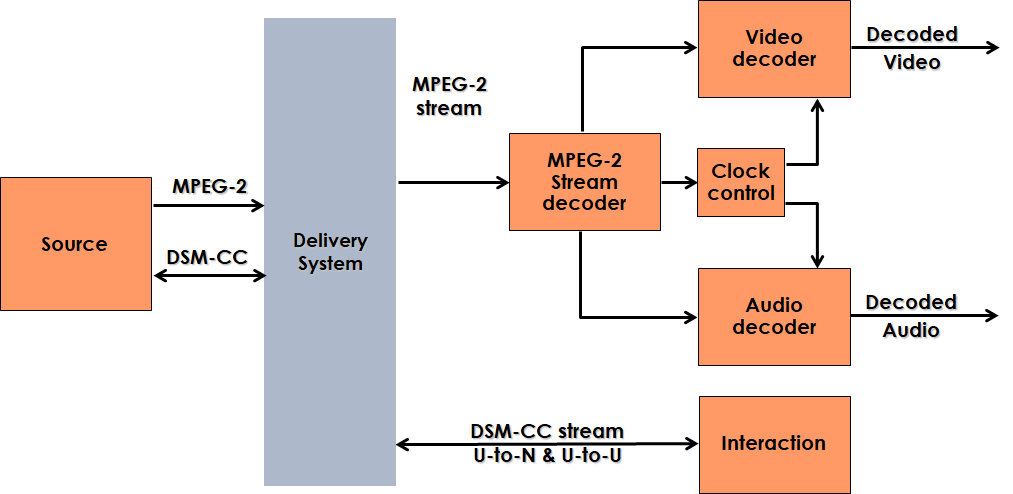 The Audio and Video subgroup had their minds split in two with one half engaged in finishing their MPEG-1 standards and the other half in initiating the work on the next MPEG-2 standard. This was just the first time MPEG subgroups had to split their minds.
The Audio and Video subgroup had their minds split in two with one half engaged in finishing their MPEG-1 standards and the other half in initiating the work on the next MPEG-2 standard. This was just the first time MPEG subgroups had to split their minds.
In those early years subgroup chairs changed rather frequently. At MPEG9 (1990/02) Colin (VLSI) was replaced by Geoff. Morrison and the name of the group was changed to Implementation study Group (ISG) to signal the fact that not only hardware implementation was considered, but software implementation as well. At MPEG12 (1990/03) Al (Systems) was replaced by Sandy MacInnis and Hans (Audio) was replaced by Peter Noll.
MPEG29 (1994/11) approved the Systems, Video and Audio parts of the MPEG-2 standard and some of the subgroup chairs saw their mission as an accomplished one. The first move was at MPEG28 (1994/07) when Sandy (Systems) was replaced by Jan van der Meer to finalise the issues left over from MPEG-2.
The MPEG subgroups did a great job in finishing several pending MPEG-2 activities such as MPEG-2 Video Multiview and 4:2:2 profiles, MPEG-2 AAC, DSM-CC and more.
A new skin of coding
In the early years 1990s, MPEG-1 was not finished and MPEG-2 had barely started but talks about a new video coding standard for very low bitrate (e.g. 10 kbit/s) were already under way. The name eventually assigned to the project was MPEG-4, because the MPEG-3 standard envisaged at MPEG1 had been merged with MPEG-2 by bringing the upper bound of the bitrate range to 10 Mbit/s .
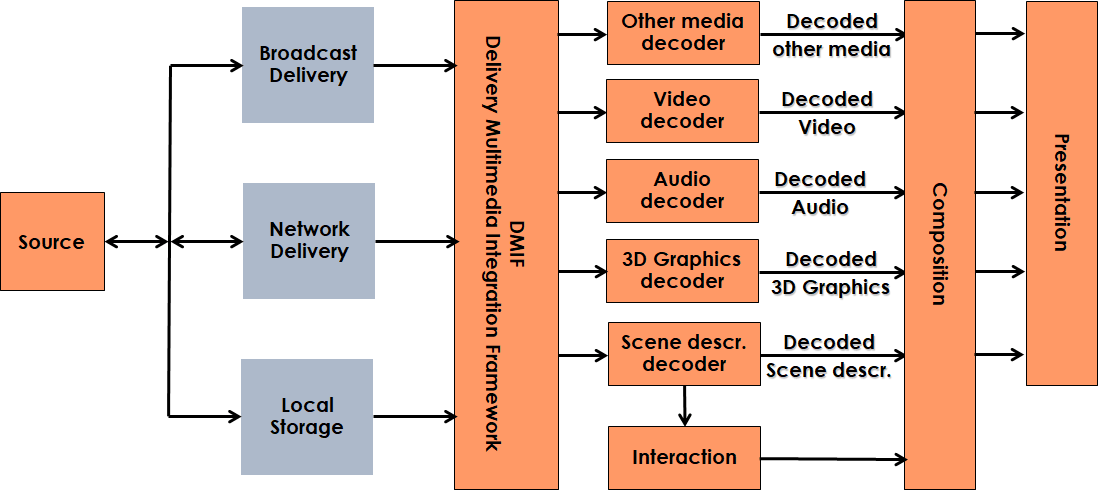 MPEG-4, whose title eventually settled to Coding of Audio-Visual Objects, was a completely different standard from the preceding two in that it aimed at integrating the world of audio and video, so far under the purview of broadcasting, CE and telecommunication, with the world of 3D Graphics, definitely within the purview of the Information Technology (IT) industry.
MPEG-4, whose title eventually settled to Coding of Audio-Visual Objects, was a completely different standard from the preceding two in that it aimed at integrating the world of audio and video, so far under the purview of broadcasting, CE and telecommunication, with the world of 3D Graphics, definitely within the purview of the Information Technology (IT) industry.
At MPEG20 (1992/11) a new subgroup called Applications and Operational Environments (AOE) was established under the chairmanship of Cliff Reader. This group took charge of developing the requirements for the new MPEG-4 project and spawned three groups inside it: “MPEG-4 requirements”, “Synthetic and Natural Hybrid Coding (SNHC) and “MPEG-4 Systems”.
The transition from the “old MPEG” (MPEG-1 and MPEG-2) and the “new MPEG” (MPEG-4) was quite laborious with many organisational and personnel changes. At MPEG30 Didier (Video) was replaced by Thomas Sikora and Peter (Audio) was replaced by Peter Schreiner At MPEG32 Geoff (ISG) was replaced by Paul Fellows and Tsuneyoshi (Test) was replaced by Laura Contin.
MPEG-4 Visual was successfully concluded thanks to the great efforts of Thomas (Video) and Laura (Test) and the very wide participation by experts. The foundations of the extremely successful AAC standards were laid down by Peter (Audio) and the Audio subgroup experts.
At MPEG34 (1996/03) C. Reader left MPEG and at MPEG35 (1996/07) a major reorganisation took place:
- The “AOE requirements” activity was mapped to the Requirements subgroup under the chairmanship of Rob Koenen, after a hiatus of 3 meeting after Sakae (Requirements) had left.
- The “AOE systems” activity was mapped to the Systems subgroup under the chairmanship of Olivier Avaro.
- The “AOE SNHC” activity became a new SNHC subgroup under the chairmanship of Peter Doenges. Peter was replaced by Euee Jang at MPEG49 (1999/10).
At MPEG 40 (1997/07) a DSM activity became a new subgroup with the name Delivery Multimedia Integration Framework (DMIF) under the chairmanship of Vahe Balabanian. DMIF addressed the problem of virtualising the distribution medium (broadcast, network and storage) from the Systems level by defining appropriate interfaces (API). At MPEG 47 (1999/03) Guido Franceschini took over with a 2 meeting tenure after which the DMIF subgroups was closed (1999/07).
At MPEG41 Peter (Audio) was replaced by Schuyler Quackenbush who since then has been running the Audio group for 23 years and is the longest-serving MPEG chair.
At MPEG46 (1998/12) Paul (ISG) was replaced by Marco Mattavelli. Under Marco’s tenure, such standards as MPEG-4 Reference hardware description, an extension to VHDL of the notion of Reference Software, and Reconfigurable Media Coding were developed.
The MPEG-4 standard is unique in MPEG history. MPEG-1 and -2 were great standards because they brought together establish large industries with completely different agendas, but MPEG-4 is the standard that bonded together the initial MPEG industries with the IT industry. The standard had big challenges and Chairs and experts dedicated enormous resources to the project to face them: video objects, audio objects, synthetic audio and video, VRML extensions, file format and more. MPEG-4 is a lively standard even today almost 30 years after we first started working on it and has the largest number of parts.
Liaisons
At MPEG33 (1996/01) the Liaison subgroup was created under the chairmanship of Barry Haskell to handle the growing network of organisations MPEG was liaising with (~50). At MPEG56 Barry, a veteran of the video coding old guard, left MPEG and at MPEG57 (2001/07) Jan Bormans took over and continued until MPEG71 (2005/01) when Kate Grant took over. The Liaison subgroup was closed at MPEG84 (2008/04). Today liaisons are coordinated at Chairs meeting, drafted by the relevant subgroup and reviewed by the plenary.
An early skin change
In 1996 MPEG started addressing MPEG-7, a media-related standard but with a completely different nature than the preceding three: it was about media description and their efficient compression. At MPEG48 (1999/07) it became clear that we needed a new subgroup that was called Multimedia Description Schemes (MDS) to carry out part of the work.
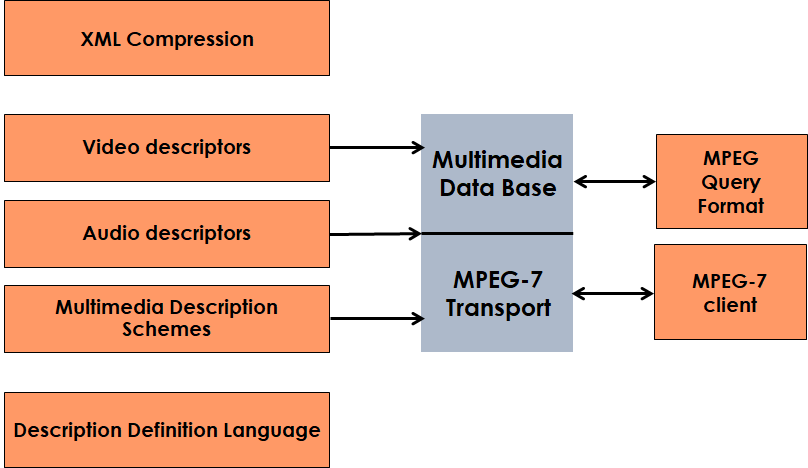 Philippe Salembier was put in charge of the MDS subgroup who was initially in charge of all MPEG-7 matters that did not involve Systems, Video and Audio. At MPEG 56 (2001/03) John Smith took over the position which he held until MPEG70 (2004/10) when Ian Burnett took over until the MDS group was closed at MPEG87 (2009/02).
Philippe Salembier was put in charge of the MDS subgroup who was initially in charge of all MPEG-7 matters that did not involve Systems, Video and Audio. At MPEG 56 (2001/03) John Smith took over the position which he held until MPEG70 (2004/10) when Ian Burnett took over until the MDS group was closed at MPEG87 (2009/02).
The media description skin has had several revivals since then. One is Part 13 – Compact Descriptors for Visual Search (CDVS) standard in the first half of the 2010. Another is Part 15 – Compact Descriptors for Video Analysis (CDVA) standard developed in the middle-to-second half of the 2010. Finally Part 17 – Compression of neural networks for multimedia content description and analysis is preparing a basic compression technology for neural network-based media description.
Another video coding
At MPEG46 (1998/12) Laura (Test) was replaced by Vittorio Baroncini. At MPEG54 (2000/10) Thomas (Video) left MPEG and at MPEG56 (2001/03) Jens-Rainer Ohm was appointed as Video chair.
Vittorio brought the expertise to carry out the subjective tests required by he collaboration with ITU-T SG 16 restarted to develop the Advanced Video Coding (AVC) standard. At MPEG58 (2001/12) Jens was appointed as co-chair of a joint subgroup with ITU-T called Joint Video Team (JVT). The other co-chair was Gary Sullivan, rapporteur of the ITU-T SG 16 Video Coding Experts Group (VCEG). The JVT continued its work until well after the AVC standard was released at MPEG 64 (2003/03). Since then Gary has attended the chairs meetings as a token of the collaboration between the two groups.
Still media-related, but a different “coding”
At MPEG49 (1999/10) the many inputs received from the market prompted me to propose that MPEG develop a new standard with the following vision: “Every human is potentially an element of a network involving billions of content providers, value adders, packagers, service providers, resellers, consumers …”.
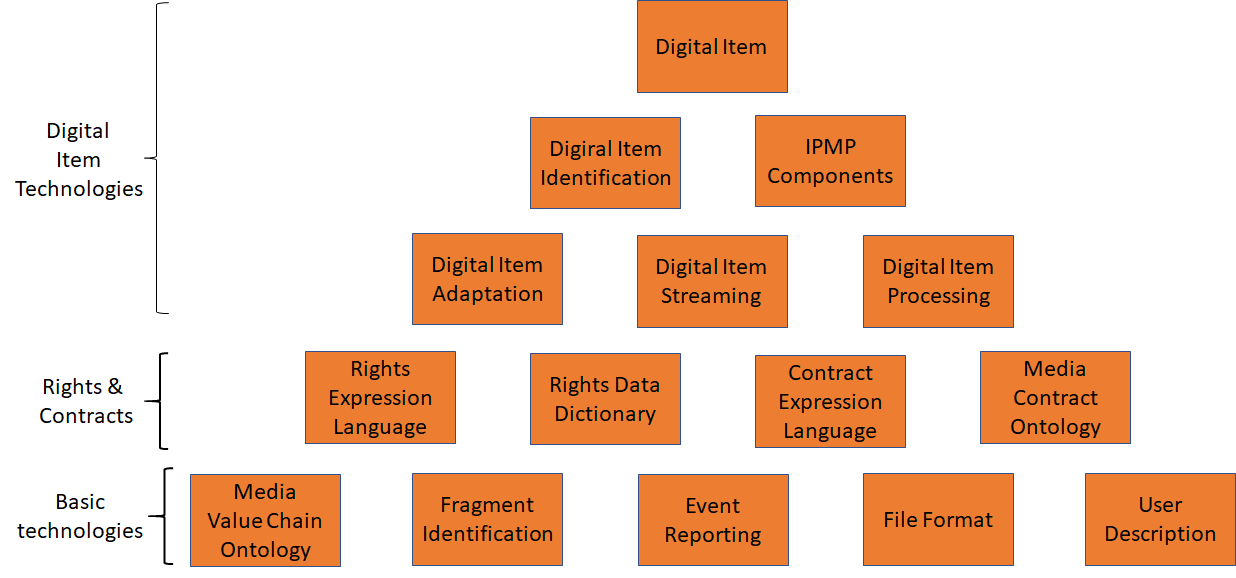 The standard was eventually called MPEG-21 Multimedia Framework. MPEG-21 can be described as the “suite of standards that enable media ecommerce”.
The standard was eventually called MPEG-21 Multimedia Framework. MPEG-21 can be described as the “suite of standards that enable media ecommerce”.
The MDS subgroup was largely in charge of this project which continued during the first decade of the 2000s with occasional revivals afterwards. Today MPEG-21 standards are handled by the Systems subgroup.
Under the same heading of “different coding” it is important to mention Open Font Format (OFF), a standard built on the request made by Adobe, Apple and Microsoft to maintain the OpenType specification. The word maintenance” in MPEG has a different meaning because OFF has had many extensions, developed “outside” MPEG in an open ad hoc group with strong industry participation and ratified by MPEG.
A standard of standards
In the early year 2000s MPEG could look back at its first decade and a half of operation with satisfaction: its standards covered video, audio and 3D Graphics coding, systems aspects, transport (MPEG-2 TS and MPEG-4 File Format) and more. While refinements on its already impressive assets were under way, MPEG wondered whether there were other areas it could cover. The answer was: the coding of “combinations of MPEG coded media”. That was the beginning of a long series of 20 standards originally developed by the groups in charge of the individual media, e.g. Part 2 – MPEG music player application format was developed by the Audio subgroup and Part 3 – MPEG photo player application format was developed by the Video subgroup. Today all MPEG-A standard, e.g. the very successful Part 19 – Common Media Application Format, are developed by the Systems subgroup.
The mid 2000s
Around the mid 2000s MPEG felt that there was still a need for more Systems, Video and Audio standards, but did not have the usual Systems, Video and Audio “triad” umbrella it had had until then with MPEG-1, -2, -4 and -7. So it decided to create containers for those standards and called them MPEG-B (Systems), MPEG-C (Video) and MPEG-D (Audio).
MPEG also ventured in new areas:
- Specification of a media device software stack (MPEG-E)
- Communication with and between virtual worlds (MPEG-V)
- Multimedia service platform technologies (MPEG-M)
- Rich media user interfaces (MPEG-U)
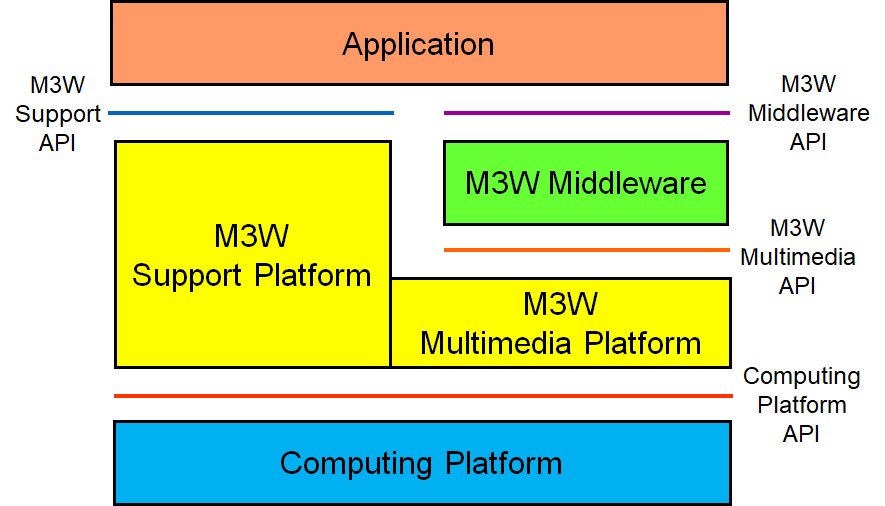 | 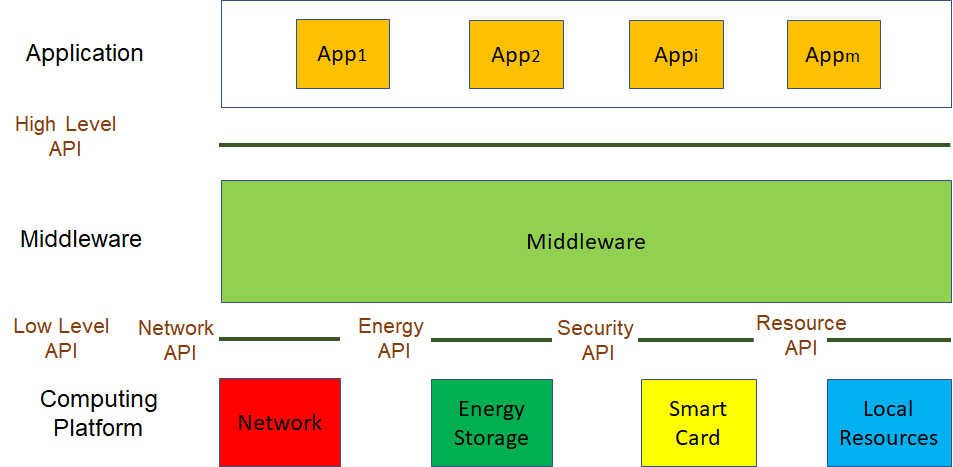 |
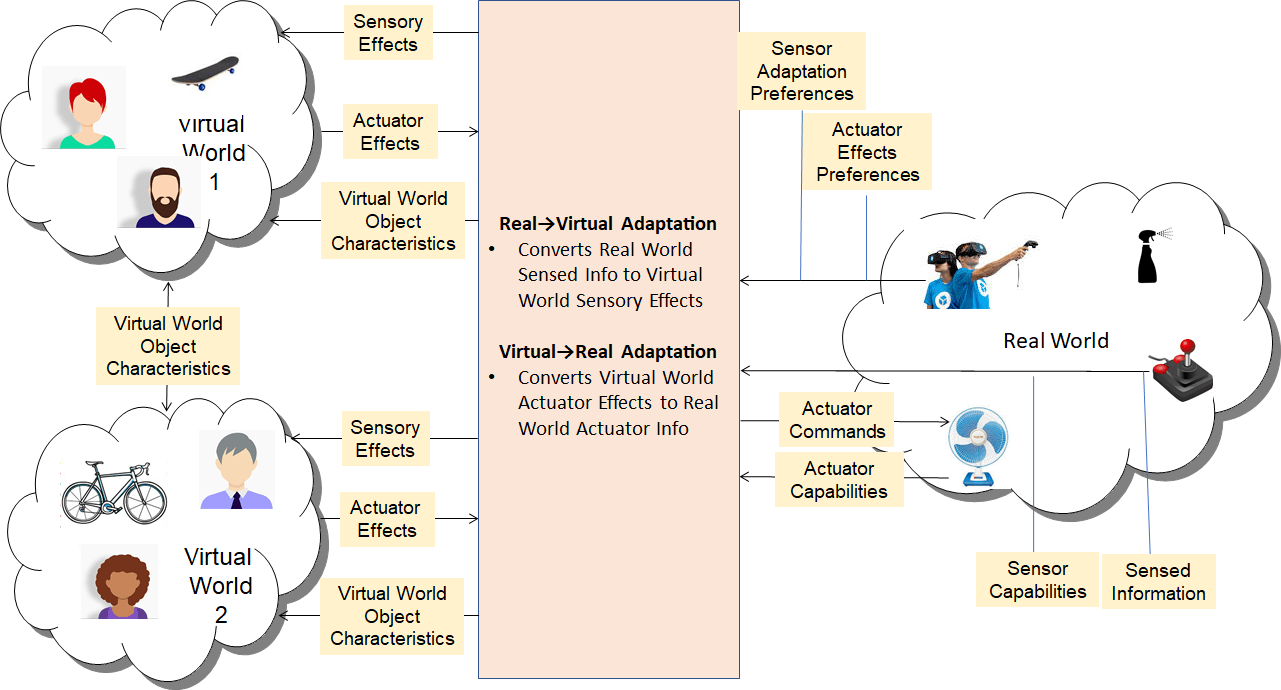 | 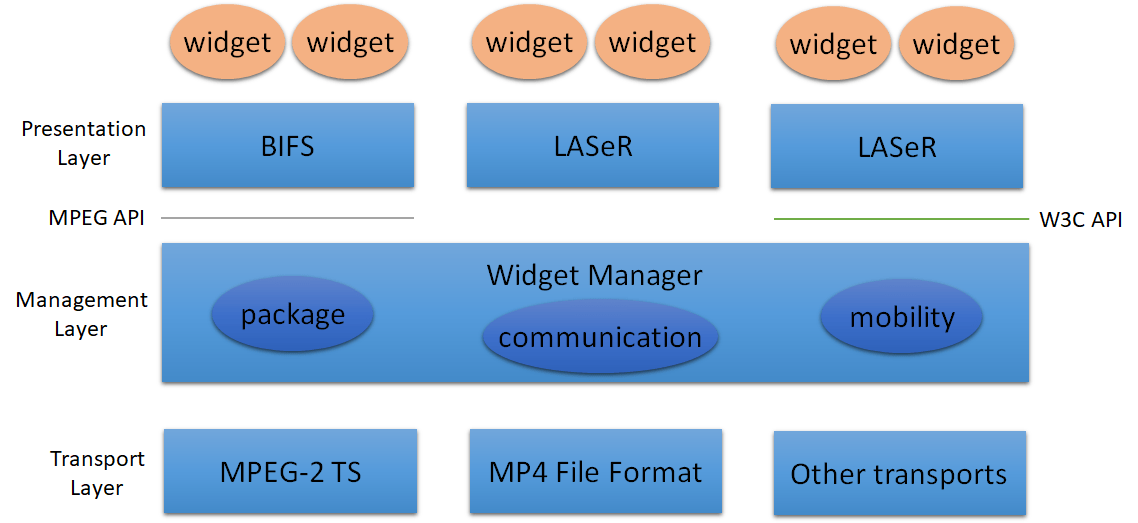 |
Rob (Requirements) continued until MPEG58 (2001/12). He was replaced by Fernando Pereira until MPEG64 (2003/04) when Rob returned, holding his position until MPEG71 (2005/01) when Fernando took over again until MPEG82 (2007/10) when he left MPEG.
The Requirements subgroup is the “control board” of MPEG in the sense that Requirements gives proposals of standards the shape that will be implemented by the operational group after the Call for Proposals. Therefore the duo Rob-Fernando have been in the control room of MPEG for some 40% of MPEG life.
Vittorio (Test) continued until MPEG68 (2004/03) when he was replaced by T. Oelbaum who held the positions until MPEG81 (2007/07).
Olivier (Systems) kept his position until MPEG86 (2008/07) when he left MPEG to pursue his entrepreneurial ambitions. Olivier has been in charge of the infrastructure that keeps MPEG standards together for 13 years and is the third longest-serving MPEG chair.
Euee (SNHC) kept his position until MPEG59 (2002/03). He was replaced by M. Bourges-Sévenier who continued until MPEG70 (2004/10). Mikaël was then replaced by Mahnjin Han who continued until MPEG78 (2006/10). The SNHC subgroup has been producing valuable standards. However, they have had a hard time penetrating an industry that is content with less performing but freely-available standards.
The return of the triad
The end of the years 2000s signaled a major change in MPEG. When Fernando (Requirements) left MPEG at MPEG82 (2007/10), the task of developing requirements was first assigned to the individual groups. The experiment lasted 4 meetings but it demonstrated that it was not the right solution. Therefore, Jörn Ostermann was appointed as Requirements chair at MPEG87 (2009/02). That was just in time for the handling of the requirements of the new Audio-Video-Systems triad-based MPEG-H standard.
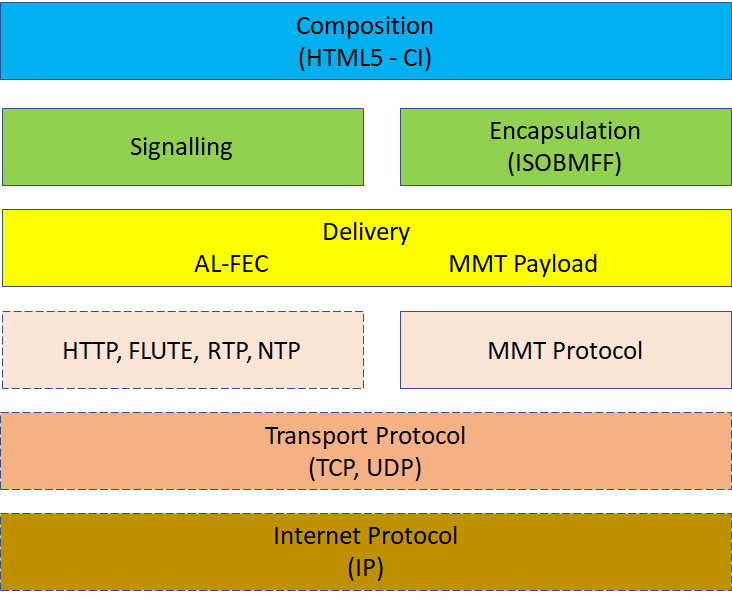 MPEG-H included the MPEG Media Transport (MMT) part, the video coding standard that eventually became High Efficiency Video Coding (HEVC) and 3D Audio. MPEG-H was adopted by thw ATSC as a tool to implement new forms of broadcasting services where traditional broadcasting and internet not only coexist but cooperate.
MPEG-H included the MPEG Media Transport (MMT) part, the video coding standard that eventually became High Efficiency Video Coding (HEVC) and 3D Audio. MPEG-H was adopted by thw ATSC as a tool to implement new forms of broadcasting services where traditional broadcasting and internet not only coexist but cooperate.
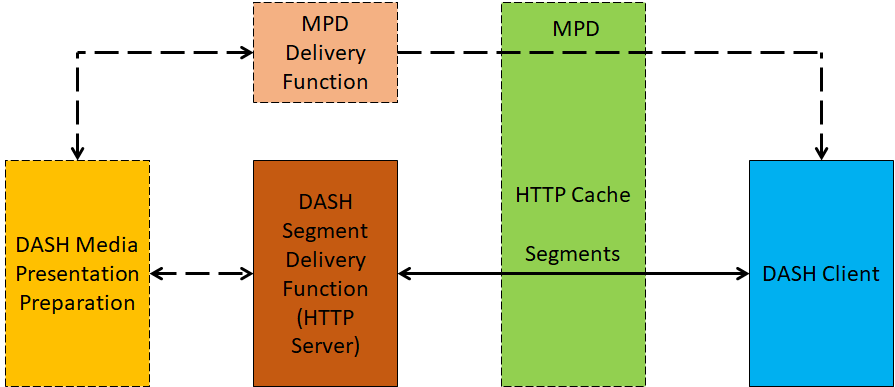 The Requirements, and then the Systems subgroups were also quickly overloaded by the other project called DASH aiming at “taming” the internet from an unreliable transport to one the end user device could adapt to.
The Requirements, and then the Systems subgroups were also quickly overloaded by the other project called DASH aiming at “taming” the internet from an unreliable transport to one the end user device could adapt to.
The two Systems projects – MMT and DASH – were managed by Youngkwon Lim who took over from Olivier at MPEG86 (2008/10).
At MPEG87 (2009/01) the MDS subgroup was closed. At the same meeting, Vittorio resumed his role as chair of the Test subgroup, about on time for the new round of subjective tests for the HEVC Call for Evidence and Call for Proposals.
The Joint Collaborative Team on Video Coding between ITU-T and MPEG (JCT-VC) was established at MPEG92 (200/04) co-chaired by Gary and Jens as in the AVC project. At its peak, the VC group was very large and processed in excess of 1,000 documents per meeting. When the group was still busy developing the main (2D video coding) part of HEVC, 3D video coding became important and a new subgroup called JCT-3V (joint with ITU-T) was established at MPEG100. The 3V subgroup closed its activities at MPEG115 (2016/05), while the VC subgroup is still active, mostly in maintenance mode.
The recent years
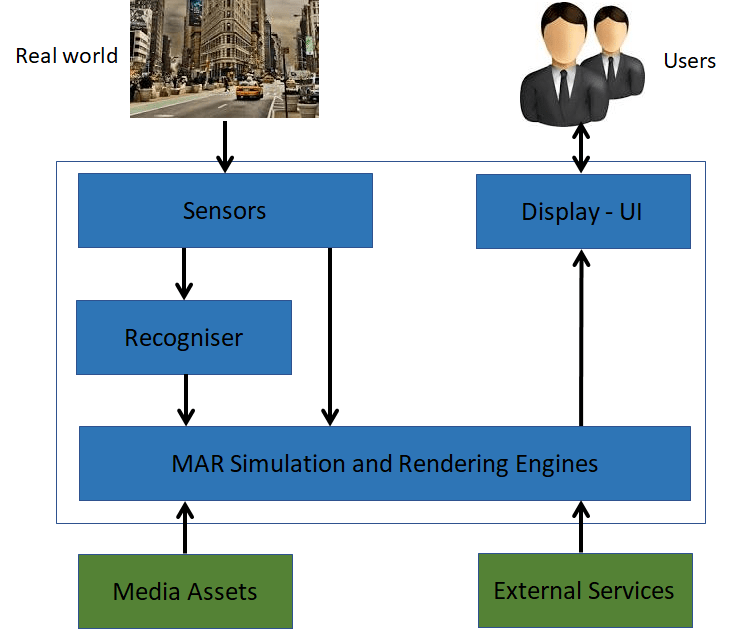 In the first half of the years 2010 MPEG developed the Augmented Reality Application Format and developed the Mixed and Augmented Reality (MAR) Reference Model in a joint ad hoc group with SC 24/WG 9.
In the first half of the years 2010 MPEG developed the Augmented Reality Application Format and developed the Mixed and Augmented Reality (MAR) Reference Model in a joint ad hoc group with SC 24/WG 9.
In 2016 MPEG kicked off the work on MPEG-I – Coded representation of immersive media. Part 3 of this is Versatile Video Coding (VVC), the latest video coding standard developed by the new Joint Video Experts Team (JVET) between ITU-T and MPEG established at MPEG114 (2016/02). It is expected to become FDIS at MPEG131 (2020/06).
The JVET co-chairs are again Jens and Gary. In the, regularly materialised, anticipation that JVET would be again overloaded by contributions, Jens was replaced as Video chair by Lu Yu at MPEG 121 (2018/01).
The Video subgroup is currently engaged in two 2D video coding standards of rather different nature Essential Video Coding (EVC and Low Complexity Enhancement Video Coding (LCEVC) and is working on the MPEG Immersive Video (MIV) project due to become FDIS at MPEG134 (2021/03).
MIV is connected with another exciting area that in this article we left with the name of SNHC under the chairmanship of Mahnjin. At MPEG79 (2007/01) Marius Preda took over SNHC from Mahnjin to continue the traditional SNHC activities. At MPEG89 (2009/06) SNHC was renamed 3D Graphics (3DG).
 In the mid 2010 the 3DG subgroup started several explorations, in particular Point Cloud Compression (PCC) and Internet of Media Things (IoMT). The former has split into two standards Video-based (V-PCC) and Graphics-based (G-PCC). The latter has reached FDIS recently.
In the mid 2010 the 3DG subgroup started several explorations, in particular Point Cloud Compression (PCC) and Internet of Media Things (IoMT). The former has split into two standards Video-based (V-PCC) and Graphics-based (G-PCC). The latter has reached FDIS recently.
nother promising activity started at MPEG109 (2014/03) and has now become the Genomic Information Representation (MPEG-G) standard. This standard signals the intention to bring the benefits of compression to industries other than media who process other data types.

Conclusions
This article was a long overview of 32 years of MPEG life. The intention was not to talk about MPEG standards, but about how the MPEG organisation morphed to suit the needs of standardisation.
Of course, structure without people is nothing. It was not obviously possible to mention the thousands of experts who made MPEG standards, but I thought that it was my duty to record the names of subgroup chairs who drove their development. You can see a complete table of all meetings and MPEG Chairs here.
In recent years the MPEG structure has remained stable, but there is always room for improvements. However, this must be driven by needs, noth by ideology.
One possible improvement is to make the Genomic data coding activity a formal subgroup as a first step in anticipation of more standards to code other non-media data. The other is to inject more market awareness into the phase that defines the existence first and then the characteristics of MPEG standards.
But this is definitely another story.
Posts in this thread
- The MPEG Metamorphoses
- National interests, international standards and MPEG
- Media, linked media and applications
- Standards and quality
- How to make standards adopted by industry
- MPEG status report (Jan 2020)
- MPEG, 5 years from now
- Finding the driver of future MPEG standards
- The true history of MPEG’s first steps
- Put MPEG on trial
- An action plan for the MPEG Future community
- Which company would dare to do it?
- The birth of an MPEG standard idea
- More MPEG Strengths, Weaknesses, Opportunities and Threats
- The MPEG Future Manifesto
- What is MPEG doing these days?
- MPEG is a big thing. Can it be bigger?
- MPEG: vision, execution,, results and a conclusion
- Who “decides” in MPEG?
- What is the difference between an image and a video frame?
- MPEG and JPEG are grown up
- Standards and collaboration
- The talents, MPEG and the master
- Standards and business models
- On the convergence of Video and 3D Graphics
- Developing standards while preparing the future
- No one is perfect, but some are more accomplished than others
- Einige Gespenster gehen um in der Welt – die Gespenster der Zauberlehrlinge
- Does success breed success?
- Dot the i’s and cross the t’s
- The MPEG frontier
- Tranquil 7+ days of hard work
- Hamlet in Gothenburg: one or two ad hoc groups?
- The Mule, Foundation and MPEG
- Can we improve MPEG standards’ success rate?
- Which future for MPEG?
- Why MPEG is part of ISO/IEC
- The discontinuity of digital technologies
- The impact of MPEG standards
- Still more to say about MPEG standards
- The MPEG work plan (March 2019)
- MPEG and ISO
- Data compression in MPEG
- More video with more features
- Matching technology supply with demand
- What would MPEG be without Systems?
- MPEG: what it did, is doing, will do
- The MPEG drive to immersive visual experiences
- There is more to say about MPEG standards
- Moving intelligence around
- More standards – more successes – more failures
- Thirty years of audio coding and counting
- Is there a logic in MPEG standards?
- Forty years of video coding and counting
- The MPEG ecosystem
- Why is MPEG successful?
- MPEG can also be green
- The life of an MPEG standard
- Genome is digital, and can be compressed
- Compression standards and quality go hand in hand
- Digging deeper in the MPEG work
- MPEG communicates
- How does MPEG actually work?
- Life inside MPEG
- Data Compression Technologies – A FAQ
- It worked twice and will work again
- Compression standards for the data industries
- 30 years of MPEG, and counting?
- The MPEG machine is ready to start (again)
- IP counting or revenue counting?
- Business model based ISO/IEC standards
- Can MPEG overcome its Video “crisis”?
- A crisis, the causes and a solution
- Compression – the technology for the digital age

